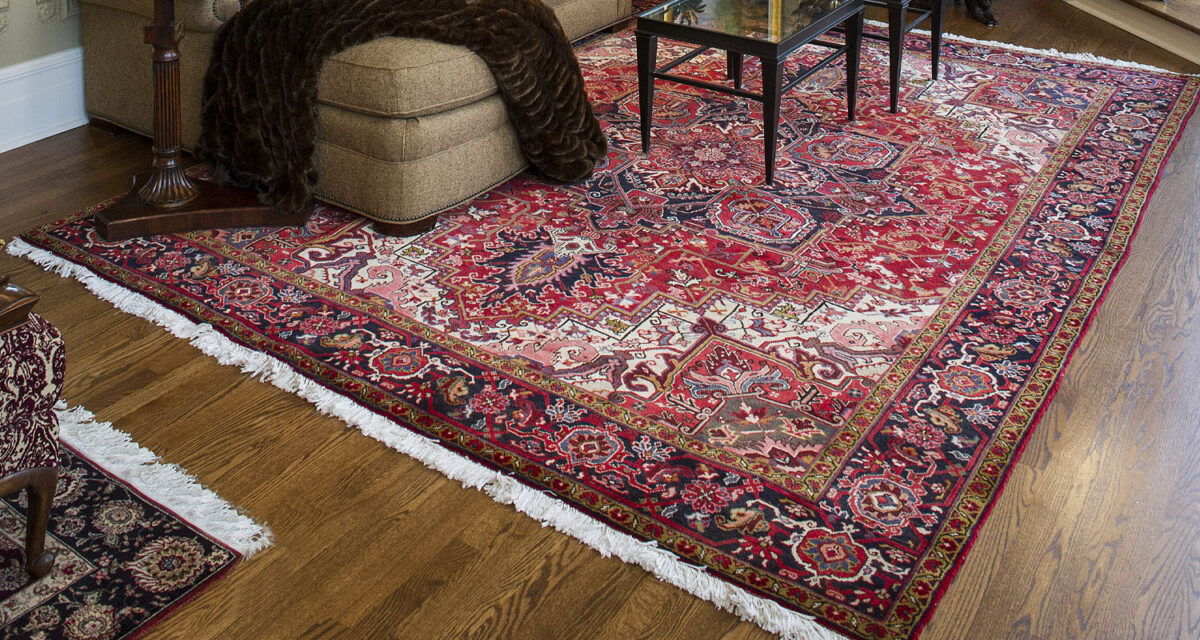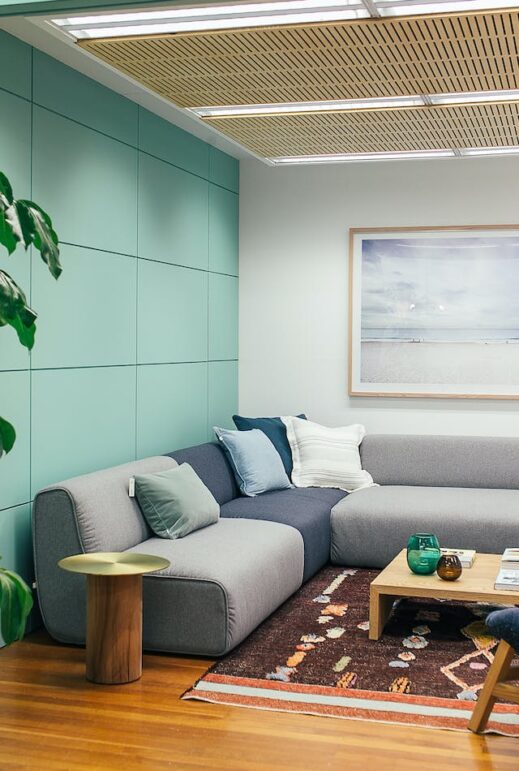Layering oriental rugs is like creating a beautiful picture, where each rug layer mixes together to create an amazing tapestry of design. It is not just about making a room cozy or colorful, but it is about carefully combining patterns, textures, and designs.
In this guide, we will help you learn how to layer oriental rugs to make rooms look incredibly stylish.
So, let’s get started!
Diverse Origin of Oriental Rugs
Oriental rugs hail from various regions across the Middle East, Asia, and North Africa, each bearing the imprint of its cultural heritage. Persian rugs, originating from Iran, boast intricate designs and rich color palettes, often symbolizing regional motifs and stories.
Meanwhile, Turkish rugs exhibit geometric patterns and bold colors, reflecting the artisan’s traditions and influences. Other notable origins include the intricate designs of Afghan rugs, or the vibrant hues found in Moroccan rugs, each with its own unique flair.
Unique Characteristics for Layering Oriental Rugs
These rugs showcase a spectrum of characteristics varying in knotting techniques, materials, and designs. Some rugs feature hand-knotted wool, while others incorporate silk for a luxurious touch. The weaving styles, such as the symmetrical knots of the Persian rug or the asymmetrical knots of Turkish rugs, contribute to their distinct textures and durability.
Complementary Layering
Layering different types of oriental rugs can create a stunning fusion of textures, colors, and cultural motifs. For instance, pairing a Persian rug with its intricate floral patterns atop a simpler, geometric Turkish rug can establish a captivating contrast. The differing sizes, textures, and designs can complement each other, creating visual interest and depth within a space.
Harmonizing Variations
Even when layering oriental rugs from different origins or styles, finding common elements like color tones, motifs, or complementary patterns can create a cohesive look. Balancing intricate designs with simpler ones, or mixing bold colors with more subdued hues, allows for an aesthetically pleasing harmony in the layered oriental rugs arrangement.
Mixing Sizes and Shapes
Experimenting with rug sizes and shapes adds another layer of creativity. A larger rug as a base layer can be complemented by smaller rugs of varying shapes placed strategically on top, creating a dynamic and visually appealing arrangement.
By understanding the origins, characteristics, and potential synergies between different types of oriental rugs, decorators can harness the diversity to craft layered compositions that celebrate the beauty of each rug while harmonizing them into a unified design statement within a room.
Layering Oriental Rugs – Techniques for Stunning Combinations
So here are some helpful techniques to create a stunning combination for layering oriental rugs:
Contrast in Sizes
Start layering oriental rug with a larger, foundational rug as the base, then add a smaller rug on top for contrast. For instance, layer a larger, muted-toned rug with a smaller, intricately patterned oriental rug to create a striking focal point.
Envision a spacious room where a large, neutral-toned foundational rug in an oriental style grounds the space, topped with a smaller, vibrantly patterned oriental rug. It will create an eye-catching contrast.
Texture Fusion
Combine oriental rugs with varying textures to add depth. Pair a plush, layered oriental rug with a flatter, finely woven one to create a tactile contrast. Picture a soft, high-pile oriental rug layered over a smooth, sleek kilim rug for a blend of comfort and visual appeal.
Want to know how? So, envision this, in a cozy corner, a sleek, flat-woven oriental rug serving as the base, paired with a plush, intricately detailed oriental rug draped over a chair. It will be offering a mix of textures for both comfort and style for the perfectly layered oriental rug.
Harmonizing Patterns
Experiment with mixing different oriental rug patterns. Try pairing a boldly patterned rug with a more subtly designed one for a balanced look. Consider combining rugs with similar motifs in different scales to create an intriguing, layered effect without overwhelming the space.
For this, imagine a dining area featuring a boldly patterned oriental rug as the base, harmonized with a smaller, subtly patterned rug in complementary colors, a captivating fusion of striking and understated designs.
By utilizing these layering techniques tailored for oriental rugs, decorators can create captivating and cohesive layered oriental rugs arrangements. It will magnify the beauty of each rug while forming a unified and elegant decor statement within a space.
Expert Tips for Layering Oriental Rug
So, let’s now delve into expert techniques for arranging these rugs in your space.
Placing Your Rugs
The positioning of your layered oriental rugs significantly influences the room’s ambiance. Consider te following tips in this matter:
- Ensure the larger rug accommodates at least the front legs of furniture
- Diagonally place the top rug over the base rug
- Maintain a slight gap between rug edges, approximately 8 to 12 inches (20 to 30 cm), allowing the underlying rug’s pattern or color to peek through.
Choosing Optimal Sizes
Opting for the right rug sizes is necessary for a balanced and harmonious look. Follow these guidelines:
- Select a larger foundational rug that adequately covers the intended floor area, leaving an appealing border of exposed flooring along the room’s periphery.
- Ensure the top rug is 2 to 3 feet (60 to 90 cm) smaller than the base rug on all sides, ensuring visibility of the underlying rug.
- In dining areas, choose a top rug spacious enough to accommodate dining chairs, even when pulled out from the table.
Layering oriental rugs is an art that weaves together cultural richness and design finesse. By understanding proper layering techniques, layered oriental rugs become captivating transforming spaces into captivating tapestries of beauty and heritage.
FAQs
Can I layer rugs with different shapes, or should they all be the same shape?
Experimenting with different rug shapes can add creativity to the layering. Mixing shapes, like combining a rectangular base rug with a round or sheepskin rug on top, can create a unique and visually appealing look.
Will layering rugs make a small room look even smaller?
When done thoughtfully, layering rugs can actually add depth and interest to a space, regardless of its size. Choosing the right sizes and patterns can visually expand a room.




